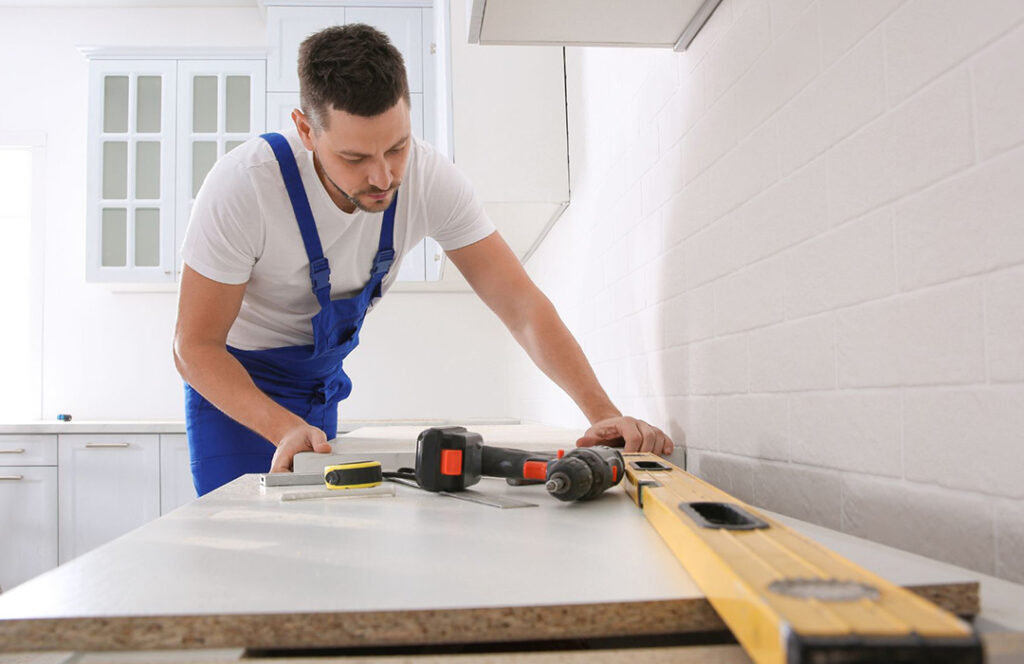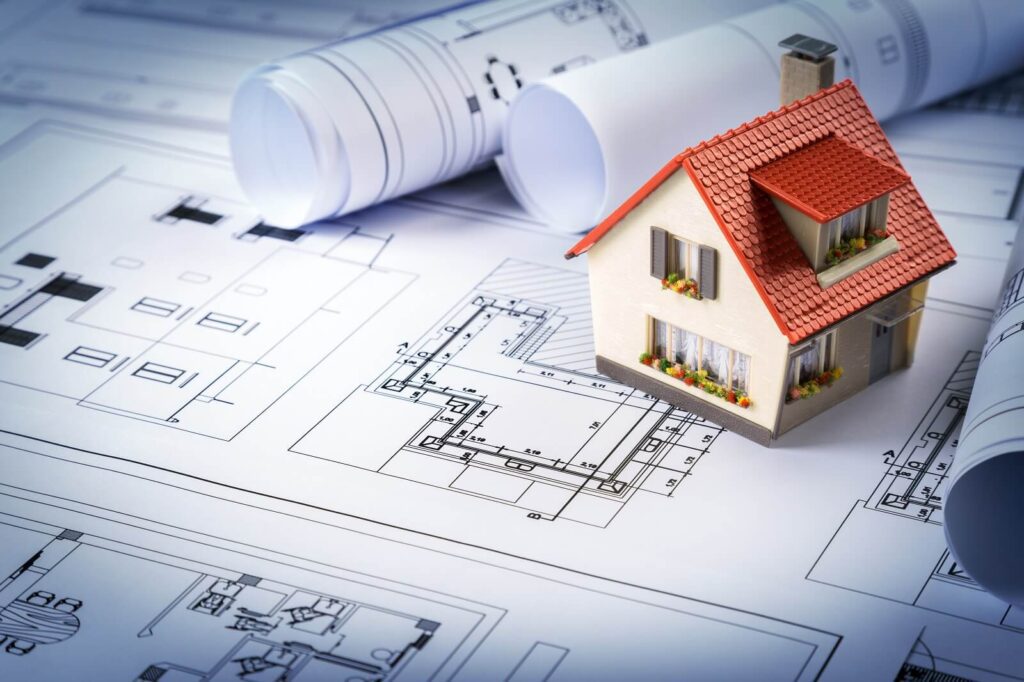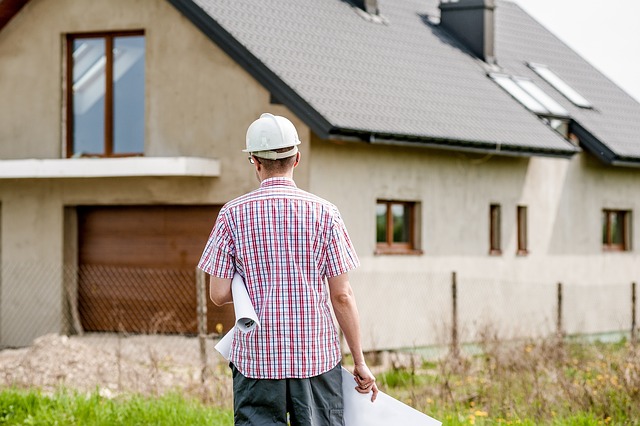Preserving historic details in modern homes during custom house remodeling is like adding a touch of time travel to your living space. Imagine seamlessly blending intricate craftsmanship from the past with contemporary design elements, creating a unique aesthetic that tells a story. As we delve into the art of maintaining historical charm in today’s renovations, we uncover ways to honor and showcase the character of older homes while embracing modern functionality. Let’s explore how you can breathe new life into your dwelling by preserving its rich history through thoughtful restoration and renovation techniques.
Understanding Your Home’s Historical Significance
Importance of Historical Significance
Preserving historic details in modern homes is crucial to maintain the authenticity and charm of a property. By understanding your home’s historical significance, you can appreciate its unique features and ensure they are carried forward into any remodeling or renovation projects. For instance, original crown moldings, stained glass windows, or intricate woodwork might be key elements that showcase the era in which your house was built.
Maintaining these historical details not only adds character to your home but also increases its value. Potential buyers often seek out properties with preserved historic features as they add a sense of timelessness and craftsmanship that can’t be replicated easily in newer constructions. Moreover, preserving these elements honors the architectural heritage of a community and contributes to its overall cultural identity.
Tips for Preservation
When planning a custom house remodeling project focused on preserving historic details in modern homes, there are several practical tips to keep in mind:
- Conduct thorough research on the architectural style and period when your house was constructed.
- Work with experienced architects or preservation specialists who understand the importance of maintaining historical integrity.
- Take care during demolition phases to salvage any reusable materials like old bricks, tiles, or fixtures.
- Consider incorporating modern amenities discreetly without compromising the original design aesthetic.
- Documenting the process through photographs or journals can help future owners appreciate the journey taken to preserve historical elements.
Planning and Goal Setting for Historic Home Projects
Assessing Historical Details
Preserving historic details during a custom house remodeling project requires careful planning. Start by assessing the existing historical elements in your home. Look at architectural features like moldings, trim work, doors, windows, or any unique characteristics that define the era when your house was built.
Consider consulting with a historian or preservation expert to identify key aspects worth preserving. By understanding the significance of these historical details, you can prioritize their protection throughout the renovation process.
Setting Preservation Goals
Establish clear preservation goals before starting any remodeling work on your historic home. Determine which elements are non-negotiable for preservation and which ones can be modified while respecting the original design intent. Create a list of priorities based on what adds value to your home’s historical character.
When setting preservation goals, consider factors like maintaining original materials, replicating specific architectural styles or patterns if replacements are necessary, and ensuring that new additions blend seamlessly with existing historic features.
Collaborating with Architectural Historians for Remodeling
Expert Guidance
Architectural historians are valuable resources when preserving historic details in custom house remodeling. They provide insights on architectural styles, materials, and historical significance. Their expertise ensures that the remodeling project respects the original design while incorporating modern elements.
Collaborating with an architectural historian can help homeowners understand the historical context of their home. By working closely with these experts, homeowners can make informed decisions about which features to preserve or restore during the remodeling process. For example, an architectural historian might identify unique architectural elements that should be retained to maintain the home’s historical integrity.
Preservation Strategies
Architectural historians offer preservation strategies that balance modern functionality with historic authenticity. They can recommend innovative ways to integrate modern amenities without compromising the home’s character. For instance, they might suggest using replica materials or salvaged items to match existing historic elements seamlessly.
Preserving Exterior Aesthetics and Interior Details
Exterior Renovations
Preserving historic details in custom house remodeling involves careful planning to maintain the unique charm of older homes. When updating exteriors, consider retaining original features like decorative trim, windows, or doors. These elements add character and history to the property while blending seamlessly with modern upgrades. It’s crucial to work closely with architectural historians or preservationists to ensure renovations align with historical accuracy.
When renovating the exterior of a historic home, opt for materials that mimic the original ones but offer improved durability and efficiency. For instance, if replacing siding, choose modern options that resemble traditional wood clapboard but are made from low-maintenance materials like fiber cement. This approach preserves the authentic look of the house while reducing maintenance requirements over time.
Pros:
- Maintains historical integrity
- Enhances curb appeal
- Increases property value
Cons:
- Higher initial costs compared to standard renovations
Interior Design Considerations
Preserving interior details during a custom remodel is essential for honoring a home’s heritage while incorporating contemporary conveniences. Retain key architectural elements such as crown molding, wainscoting, or built-in cabinetry when updating interior spaces. These features contribute to the overall aesthetic appeal and authenticity of historic homes.
Incorporate modern amenities without compromising on historical charm by carefully integrating them into existing structures. For example, installing hidden wiring or ductwork can preserve original walls and ceilings while providing functionality for updated lighting or HVAC systems. By thoughtfully blending old and new design elements, homeowners can enjoy a harmonious living space that respects the past yet meets present-day needs.
Balancing Functionality with Historical Integrity
Modern Amenities Integration
Preserving historic details in a modern home doesn’t mean sacrificing convenience. Integrating contemporary amenities like smart thermostats or energy-efficient lighting can enhance the functionality of your space without compromising its historical integrity. For instance, you could install hidden wireless speakers that blend seamlessly into the Victorian-style molding of your living room.
Adding these features not only elevates the comfort and efficiency of your home but also allows you to enjoy modern technology while maintaining the charm of historic architecture. By carefully selecting where and how to incorporate these upgrades, you can strike a perfect balance between preserving historical elements and embracing modern conveniences.
Materials Selection
Choosing suitable materials is crucial when renovating a historic house to ensure that it retains its authentic character. Opt for high-quality materials that mimic traditional finishes such as reclaimed wood flooring or period-appropriate tiles for bathrooms and kitchens. These choices help maintain the original look and feel of the house while providing durability for everyday use.
When updating interior spaces, consider using salvaged architectural elements like vintage door knobs or stained glass windows to infuse unique historical touches throughout your home. Reclaimed materials not only contribute to sustainability but also add genuine character that complements the existing design seamlessly.
Upgrading Building Systems in Historic Homes
Electrical and Plumbing Considerations
Preserving historic details while upgrading a house often involves updating electrical and plumbing systems. Old wiring may need to be replaced with modern, safer options without compromising the home’s historical charm. It’s crucial to work with professionals who understand how to integrate new systems seamlessly into older structures. For instance, when rewiring a historic home, electricians can hide wires behind baseboards or crown molding to maintain the original aesthetics.
Replacing outdated pipes is essential for functionality and safety. Copper or PEX piping are popular choices due to their durability and compatibility with older homes’ unique layouts. To preserve the historical aspects of a property during these upgrades, plumbers can carefully conceal pipes within walls or under floors without damaging original features like exposed brickwork or wooden beams.
Heating and Cooling Solutions
Integrating modern heating and cooling solutions into historic homes requires careful planning. Homeowners can opt for ductless mini-split systems, which provide efficient temperature control without extensive ductwork that could compromise architectural elements like high ceilings or intricate moldings. These systems offer zoned heating and cooling, allowing occupants to customize comfort levels in different areas of the house while preserving its historical character.
Another option for upgrading heating in older homes is radiant floor heating. This system discreetly warms rooms from the ground up without relying on visible radiators that might clash with traditional decor styles found in historic properties.
Navigating Historical Regulations and Permits
Understanding Historic Preservation Guidelines
Preserving historic details in modern homes involves adhering to specific guidelines set by historical preservation organizations. These guidelines ensure that the original character and features of a historic home are maintained during any renovation or remodeling work. For instance, when renovating a historic home, it’s crucial to preserve unique architectural elements such as crown moldings, trim work, or original flooring to retain its historical authenticity.
Historical preservation guidelines also dictate the types of materials that can be used in renovations. To maintain the integrity of a historical property, it may be necessary to use traditional building materials like wood or plaster instead of modern alternatives such as vinyl or drywall. By following these guidelines, homeowners can successfully blend historic charm with modern conveniences while respecting the legacy of their property.
Consulting with Preservation Experts
Navigating through historical regulations and permits can be complex for homeowners undertaking custom house remodeling projects. Seeking guidance from preservation experts such as architects specializing in historic renovations or consultants familiar with local historical regulations is essential. These professionals possess the expertise needed to interpret and apply historical preservation guidelines correctly.
Moreover, consulting with preservation experts can help homeowners identify creative solutions to preserve historic details within their homes while meeting modern living standards. They can provide valuable insights on how to incorporate contemporary amenities without compromising the integrity of a historic property. Working closely with these specialists ensures that custom house remodeling projects strike a balance between preserving historical significance and enhancing functionality for today’s lifestyle needs.
Budgeting and Financial Assistance for Restoration
Setting a Realistic Budget
Creating a budget is crucial when planning a custom house remodeling project to preserve historic details. Start by assessing the scope of work needed, such as restoring original fixtures or updating infrastructure while maintaining historical integrity. Consider hiring professionals like architects or contractors to provide accurate cost estimates.
When setting your budget, account for unexpected expenses that may arise during the restoration process. It’s essential to prioritize which historic details are non-negotiable and allocate funds accordingly. Research average costs for similar projects in your area to ensure your budget is realistic and comprehensive.
Pros:
- Helps avoid overspending
- Ensures all aspects of the project are accounted for
Cons:
- Unexpected costs may still occur
- Balancing preservation with modern updates can be challenging
Exploring Financial Assistance Options
Restoring historic details in modern homes can be costly, but there are various financial assistance options available to help offset expenses. Look into grants specifically designed for historic preservation projects, offered by organizations like the National Trust for Historic Preservation or state historical societies.
Another option is tax incentives or credits provided by local governments or federal programs for preserving historical features in properties. These financial benefits can significantly reduce the overall cost of your custom house remodeling project while allowing you to maintain valuable architectural elements.
- Research grants from organizations like National Trust.
- Explore tax incentives from local governments.
- Consult with experts on available financial assistance options.
Completing the Picture with Exterior Restoration and Landscaping
Preserving Historic Details in Exterior Design
Preserving historic details on the exterior of a house is crucial when custom house remodeling to maintain its original charm. Elements like intricate moldings, decorative trims, or unique architectural features should be carefully restored or replicated. For instance, if your home has a distinctive porch railing design from the 1920s, ensure it’s preserved during renovation.
When updating your landscaping as part of custom house remodeling, consider incorporating elements that complement the historic aspects of your home. Opt for plant varieties popular during the era when your house was built. Using materials like reclaimed bricks for pathways or vintage-style lamp posts can enhance the overall historical aesthetic while adding functionality.
Balancing Modern Functionality with Historic Charm
While preserving historic details is essential during custom house remodeling, integrating modern functionalities is equally important. For example, upgrading windows to energy-efficient models that mimic the original style maintains aesthetics while improving insulation. Similarly, installing smart irrigation systems within period-appropriate garden designs marries convenience with authenticity.
Pros:
- Maintains original charm
- Enhances curb appeal
- Adds value to the property
Cons:
- Costlier than complete modernization
- Requires meticulous planning and execution
Seeking Professional Expertise for Authentic Restoration
Engaging professionals specializing in historical preservation can be invaluable when undertaking custom house remodeling to preserve historic details. These experts have experience working with older homes and understand how to maintain authenticity while meeting modern standards. They can provide insights on suitable restoration techniques and materials specific to different time periods.
- Consult with local historical societies for guidance.
- Research reputable contractors experienced in historic restorations.
- Request examples of previous projects showcasing successful preservation efforts.
- Prioritize communication with experts throughout every stage of renovation.
Conclusion
You’ve taken a deep dive into the world of historical home remodeling, learning how to blend the past with the present seamlessly. By understanding the significance of your home’s history, collaborating with experts, and balancing modern needs with historical charm, you’re on your way to creating a masterpiece that stands the test of time. Remember, it’s not just about preserving walls and floors; it’s about safeguarding stories and memories.
As you embark on your custom house remodeling journey, keep in mind that each nail you hammer and every color you choose plays a part in honoring the legacy of your home. Embrace the challenges, celebrate the victories, and let the spirit of history guide your hands. Your modernized historic home will not only be a reflection of your style but a tribute to the craftsmanship of yesteryears. Now go forth and restore with passion and purpose!
Elevate Your Dream Home With Custom House Remodeling Planning By Red White & Blue Construction!
Considering a custom house remodeling project in Lafayette, CA? Red White & Blue Construction is your go-to expert for meticulous pre-remodeling planning services! Specializing in crafting the perfect foundation for successful house remodeling projects, we customize our pre-remodeling strategies to align with your unique vision and requirements. Known for our deep expertise in pre-remodeling planning, we are dedicated to ensuring your dream home becomes a reality, with every detail planned and prepared to meet your expectations. Our esteemed reputation throughout the Bay Area is a testament to our commitment to precision, quality, and the exceptional standards we maintain in every planning stage.
At Red White & Blue Construction, we do more than just lay the groundwork; we pave the way for your remodeling project’s triumph. With our thorough planning, transparent pricing, and outstanding client service, embarking on a custom house remodeling project with us means setting the stage for a smooth, efficient transformation. Opt for Red White & Blue Construction for your pre-remodeling planning needs and start your journey to your dream home with confidence. Contact us today to begin!
Disclaimer
The materials available on this website are for informational and entertainment purposes only and not to provide advice. You should obtain advice concerning any particular issue or problem from a professional. You should not act or refrain from acting based on any content included in this site without seeking legal or other professional advice. The information presented on this website may not reflect the most current building developments. No action should be taken in reliance on the information on this website. We disclaim all liability concerning actions taken or not taken based on any or all of the contents of this site to the fullest extent permitted by law.





